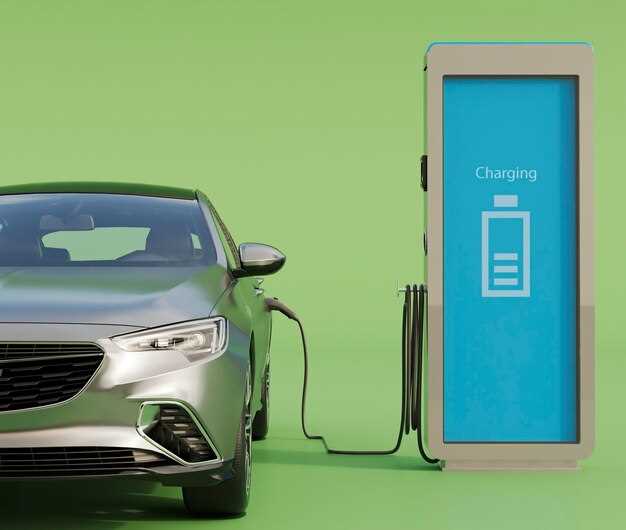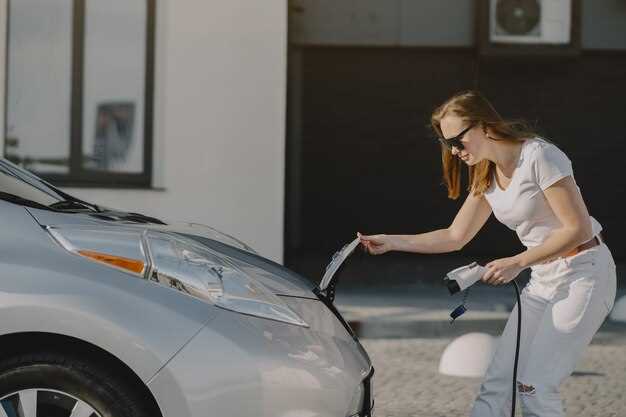
As the demand for luxury electric vehicles (EVs) continues to rise, so too does the necessity for effective charging solutions. Two primary options stand out for owners: home charging systems and public charging stations. Each approach offers its own set of benefits and drawbacks, influencing the overall ownership experience of these high-tech automobiles.
Home charging provides the convenience of refueling your vehicle overnight, allowing for a seamless transition from electric energy to daily driving. This method offers a level of comfort and ease that many luxury EV owners greatly appreciate, especially given the often high initial investment in these vehicles. Home charging stations can often be integrated with smart technology, providing insights into charging patterns, energy consumption, and even the ability to schedule charging during off-peak hours to save on electricity costs.
However, public charging options cannot be overlooked, as they play a critical role in the broader electric vehicle ecosystem. These charging stations are strategically placed in urban areas, highways, and popular destinations, allowing drivers to extend their range and explore further without the anxiety of running low on battery. With advancements in charging technology, many public charging points now offer ultra-fast charging capabilities, reducing the time spent at charging locations significantly.
In this article, we will delve into the comparisons of home charging and public charging options, assessing their practicality, costs, and impact on the overall luxury EV experience. By understanding the strengths and limitations of each charging solution, potential owners can make more informed decisions to suit their unique lifestyles and driving needs.
Evaluating the Cost of Home Charging Setups

The cost of setting up a home charging station for luxury electric vehicles can vary significantly based on several factors. First and foremost, the type of charger selected plays a crucial role. Level 1 chargers are the most basic and typically utilize a standard 120-volt outlet, costing around $300 for the unit itself. However, they are slower, often taking over 12 hours to fully charge a vehicle. On the other hand, Level 2 chargers, which operate on a 240-volt outlet and provide faster charging, range from $500 to $1,500, with installation costs potentially adding another $1,000 depending on the electrical upgrades required.
Installation costs can vary depending on several factors, including the distance from the electrical panel, the need for new wiring, and local labor rates. If the home lacks adequate electrical infrastructure, a service upgrade could add $2,000 to $4,000 to the total cost. Additionally, considering the local permits and inspection fees is essential, which can add several hundred dollars to the overall expenditure.
Furthermore, the ongoing cost of electricity must also be factored in. Charging at home typically costs between $0.10 and $0.30 per kWh, meaning that the average cost to fully charge a luxury electric vehicle could range from $5 to $15, depending on battery size and local electricity prices. Evaluating personal energy consumption and potential changes in electric rates will help estimate long-term expenses.
Tax incentives and rebates may also influence the overall cost of home charging setups. Many states offer incentives for installing EV chargers, which can significantly reduce the initial investment. Researching local programs can provide additional savings and make home charging more financially attractive.
In summary, when evaluating the cost of home charging setups for luxury electric vehicles, it is essential to consider the initial cost of the charger, the installation expenses, ongoing electricity costs, and potential state incentives. This comprehensive approach ensures that vehicle owners make informed decisions that align with their budget and lifestyle preferences.
Accessibility and Convenience of Public Charging Stations
Public charging stations play a crucial role in the electric vehicle (EV) ecosystem, especially for luxury electric vehicle owners who often travel longer distances. The accessibility of these charging points can significantly enhance the practicality of owning an EV. As charging infrastructure continues to develop, many cities are increasingly prioritizing the installation of public chargers, ensuring they are placed in easily accessible locations such as shopping centers, parking garages, and busy urban areas.
Convenience is another key advantage of public charging stations. Many stations are equipped with fast-charging technology, allowing luxury EVs to recharge to a significant percentage in a fraction of the time needed for home charging. This is particularly beneficial for those who may not have access to a home charging solution or who live in apartments without dedicated parking. The availability of real-time maps and apps to locate nearby charging stations further enhances the experience, enabling drivers to plan their trips efficiently.
Additionally, public charging stations often provide an opportunity to combine charging with daily activities. Luxury EV owners can take advantage of downtime while running errands or dining out, making the charging process seamless and less of a disruption to their daily routines. This integration of charging with lifestyle not only adds convenience but also encourages more drivers to make the switch to electric vehicles.
However, despite the advancements in public charging infrastructure, challenges remain. Availability of chargers can vary significantly by region, and peak times can lead to long wait times at popular stations. To mitigate this, luxury EV owners are encouraged to perform some planning, utilizing apps that provide real-time usage data for charging stations.
In conclusion, while home charging offers a level of convenience for daily needs, the proliferation of publicly accessible charging stations is crucial in ensuring that luxury electric vehicle owners enjoy a more flexible and worry-free driving experience. As infrastructure continues to evolve, the combination of strategic locations, fast-charging capabilities, and technology-enhanced ease of use will make public charging an increasingly appealing option.
Analyzing Charging Speed Differences Between Home and Public Solutions

The charging speed of electric vehicles (EVs) is a critical aspect that influences user convenience and overall experience. Understanding the differences between home charging and public charging solutions is essential for luxury EV owners who seek both efficiency and practicality.
Home charging typically utilizes Level 2 chargers, which operate at 240 volts. This setup allows for faster charging compared to standard household outlets (Level 1), delivering approximately 10 to 60 miles of range per hour, depending on the vehicle and charger capacity. Many luxury EV owners opt for dedicated home charging stations, maximizing the speed for overnight charging, thereby ensuring their vehicle is ready for use at any moment.
In contrast, public charging stations vary significantly in terms of technology and speed. Level 2 public chargers offer similar charging rates as home solutions but are often less accessible or overloaded. On the other hand, DC fast chargers (Level 3) can deliver a substantial amount of electricity very quickly, providing around 60 to 100 miles of range in just 20 minutes. This rapid charging feature makes public stations particularly attractive for long-distance trips or when quick top-ups are necessary.
Despite the advantage of speed at public stations, factors such as availability, wait times, and user experience can hinder their effectiveness. Luxury EV owners may find themselves waiting for a charging spot at busy locations, which may offset the time saved by faster charging. Furthermore, the cost of using public chargers can be significantly higher compared to the lower costs associated with home electricity rates.
Ultimately, while public charging solutions offer rapid replenishment, the convenience and predictability of home charging remain appealing. Owners of luxury electric vehicles should assess their driving patterns, charging needs, and preferences to determine the most suitable charging strategy that balances speed, cost, and convenience.

